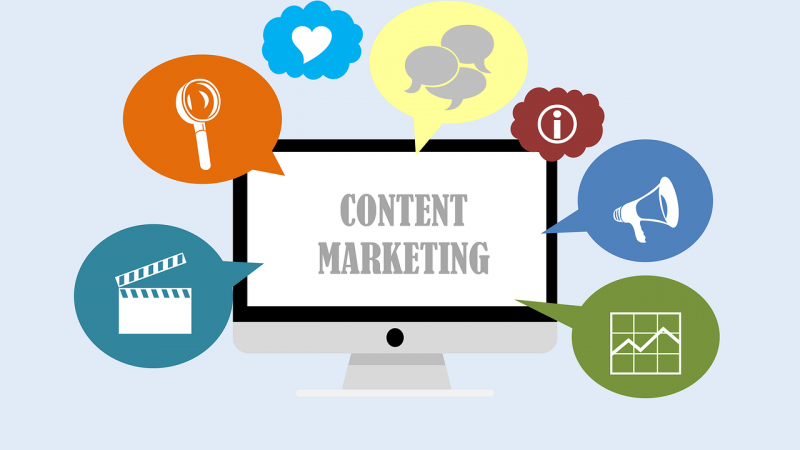Infographics: How to Raise Interest In Content In 5 Steps

Traditional forms such as blog posts and email newsletters are still a major thing in the digital marketing universe, but visual formats like videos and infographics are getting increasingly popular in the last few years.
How come?
Well, it seems like users prefer visual content over plain textual posts because the human brain processes image much faster than words. According to the report, visuals increase the desire to read content by 80%, which means that attractive infographics can help you to raise interest in content quickly and efficiently.
A lot of marketers figured it out already, so you’ll have to follow state of the art content marketing trends in order to outperform competitors and design better infographics. In this post, we will discuss everything you need to know about infographics and show you five ways to create an eye-catching infographic. Let’s take a look!
Infographics: Stats and Facts
Infographics are nothing more than combinations of information and graphics. By definition, it is a graphic visual representation of information, data, or knowledge intended to present information quickly and clearly.
The format is popular because it has the ability to visualize complex concepts and processes, thus making complicated topics seem fairly simple. Besides that, infographics represent an excellent branding opportunity as it’s easy to design attractive templates. Numerous studies prove the value of infographics:
- An infographic is 30 times more likely to be read than a purely textual article.
- Over 40% of marketers claim that infographics and other original graphics are the most engaging formats, outperforming every other type of content.
- Social media users share infographics three times more than any other type of content.
The benefits of infographic-powered content are obvious, but let’s dive deeper into the subject and see the most popular types of infographics.
Common Types of Infographics
Infographics can come in many different versions, but we want to point out the most relevant solutions only. Here they are:
- Statistical infographics: It’s a perfect solution for representation of survey results or any other data-rich report.
- Informational infographics: The most popular version is common among marketers trying to present certain concepts, ideas, or phenomena.
- Timeline infographics: If you need to show the progress or evolution of a certain concept or event, then you might as well go with timeline infographics.
- Process infographics: Unlike timeline infographics, process-focused solutions display an overview of stages in a given process or activity.
- Geographic infographics: Some marketers want to present location-based information, which is where geographic templates step in to help them.
- Comparison infographics: Another option is to use infographics to compare two concepts, products, or services.
- Hierarchical infographics: This version displays information in a hierarchical order by prioritizing the most relevant facts and stats.
- List infographics: It is one of the simplest formats as the only purpose is to share a list of tips, suggestions, stats, examples, and so on.
- Resume infographics: Jake Gardner, a digital marketer at the essay writing service UK, explains that the last solution is getting popular these days as many young talents use resume infographic templates to create a good-looking CV.
5 Practical Tips to Design a Great Infographic
You’ve seen the most important facts about infographics, but now it is time to focus on the main segment of our article. Without further ado, let’s see five practical ways to design a compelling infographic.
- Choose the right topic
The topic you choose can make or break your hopes of designing an amazing infographic. After all, no one wants to read outdated or irrelevant content, so do your best to identify a popular subject. There are two basic approaches here:
- Choose a trendy topic that you know will provoke users in a given moment. A tool such as Google Trends will help you to discover the hottest themes in the targeted region.
- Choose an evergreen topic that you know will remain relevant in the long run.
We believe that the best strategy is to combine the two methods and mix trendy and evergreen topics.
- Collect information
The second step is to find enough resources and collect relevant information to make an infographic. Fortunately, you can find a whole lot of sources of information online, so let’s name a few options here:
- Company data will help you to design templates about your products, services, strategies, etc.
- Public data resources are everywhere around you. We are talking about government agencies, universities, NGOs, and so on.
- Online data resources are impossible to count as you can find tons of useful studies, charts, reports, and other materials on the Internet. Regardless of the topic, you can find it all online – information about healthcare, human rights, transportation, travel, environment, and many more.
- Structure your content
Similar to blog posts, infographics also come with a simple structure that consists of several key components. The first element is the headline followed by a brief introduction. Use it to briefly introduce the audience to the subject and encourage them to keep reading.
The second component is the body part of an infographic. In our opinion, it shouldn’t contain more than 10 points because it will make the file too long and too large. The third component is your call to action, so make sure to use it properly and inspire users to take action upon reading.
The last thing you need to do is to insert citations and explain how you found all those stats, information, and facts.
- Create an eye-pleasing template
As visual files, infographics require a fair share of planning design-wise. The goal is to make it as beautiful as possible without interfering with the content presented in your document. The good thing is that you can use all sorts of digital tools to create a great infographic, with our favorite options being Canva and Visual.ly.
Besides that, don’t forget to brand your infographics by adding a logo and using well-known color schemes. That way, each user will know that your company is standing behind this piece of content.
- Promote your infographic
Your infographic should be completed by this point, but it’s not where the story ends. On the contrary, you still need to promote your content using different communication channels.
It all starts with your website, but keep in mind to add an embed code and enable visitors to share your infographic wherever they want. Of course, you should also make use of email campaigns and social networks to promote the infographic.
The last suggestion is to invest in display advertising if your infographic really matters to you – it will help you to reach out to the highly targeted audience group and make a real impact on your fans.
Conclusion
There are many ways for a digital marketer to improve content marketing strategy and boost users’ interest, but infographics are certainly one of the most productive tools here. It’s a special sort of content that mixes visual and textual formats, which makes a perfect combination for the majority of modern audiences.
In this article, we showed you the basic infographic types and explained how to design a wonderful infographic in five simple steps. Have you ever tried making an infographic? Did it help you to raise interest in your content?



